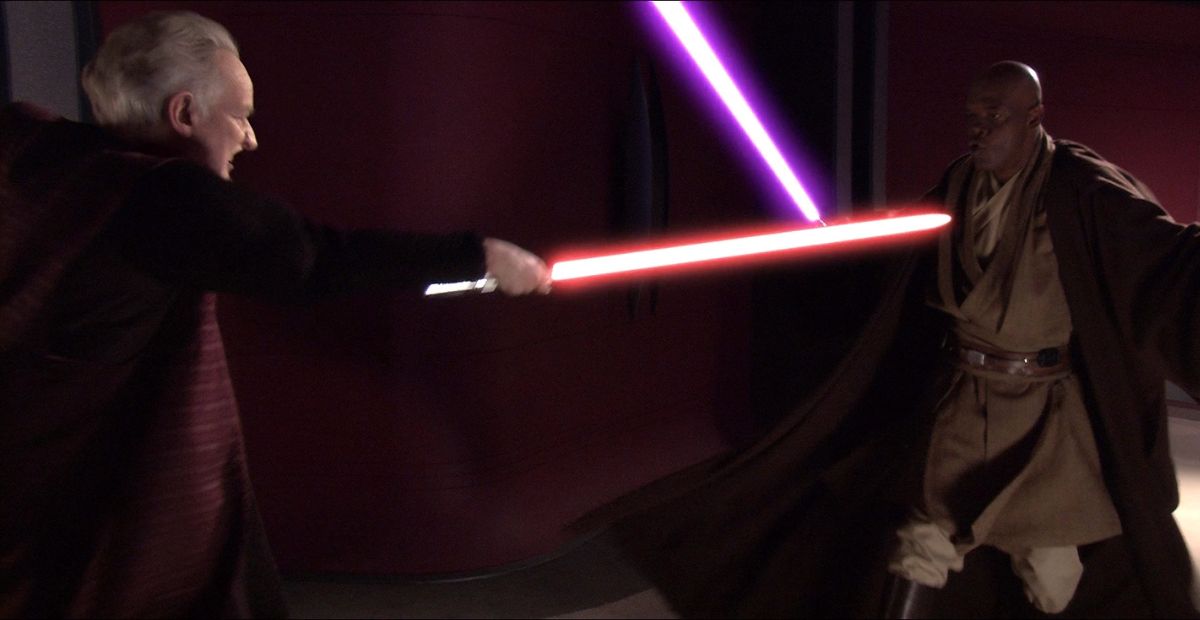In Revenge of the Sith, there’s a subtle but brilliant moment that often goes unnoticed, yet it speaks volumes about Anakin’s internal struggle and eventual fall to the dark side. The two scenes below are the key turning points in Anakin’s story arc—the moment he realizes that the Jedi and the Sith, in his eyes, have become indistinguishable.
Let’s break this down.
The Execution of Count Dooku

At the beginning of Revenge of the Sith, Anakin finds himself in a precarious situation. He’s captured Count Dooku in a lightsaber duel, and Palpatine, his secret manipulator, urges him to kill Dooku. Anakin hesitates. After all, it’s “not the Jedi way” to kill a defenseless opponent, even a Sith Lord. But Palpatine insists, telling Anakin that Dooku is “too dangerous to be kept alive.” Reluctantly, Anakin decapitates Dooku, a moment that sets him on a dark path, filled with doubt and moral conflict.
Anakin’s justification for killing Dooku is weak. Palpatine was able to exploit Anakin’s vulnerability by positioning the act as a necessity, not a choice. Though the seeds of doubt are planted, Anakin still holds onto his Jedi teachings—at least for the moment.
The Duel with Mace Windu

Fast forward to the showdown between Mace Windu and Palpatine. Anakin is torn. He’s developed a deep fear of losing Padmé and believes Palpatine holds the key to saving her. As Windu defeats Palpatine, Anakin makes a desperate plea not to kill him, demanding that Palpatine stand trial. Windu, however, echoes the very words that Palpatine used earlier: “He’s too dangerous to be kept alive.”
This repetition is not just a line—it’s the moment that shatters Anakin’s worldview.
For Anakin, hearing this from a Jedi, especially from someone as righteous as Mace Windu, is deeply unsettling. In his mind, this proves the hypocrisy of the Jedi. How are they different from the Sith if they’re willing to kill without trial, without mercy? The Jedi, who taught him to value life and justice, are now using the same cold logic as the Sith. In that instant, the moral distinction between the two sides evaporates for Anakin.
The Breaking Point
This is where Anakin begins to view the Jedi as corrupt and self-serving. He perceives that they, like the Sith, are willing to abandon their principles when it suits their needs. In Anakin’s eyes, the Jedi have become the very thing they swore to destroy.
What makes this moment even more impactful is the irony of Anakin’s inner conflict. Just a short time before, he used the same logic to justify killing Dooku. But now, when faced with the same decision in a context that personally affects him, Anakin suddenly feels the weight of the hypocrisy he’s participating in.
Anakin’s plea—”That’s not the Jedi way”—becomes more than just a line. It’s the cry of someone who has lost faith in everything he once believed in. For Anakin, this moment with Mace Windu is more than just a decision between life and death for Palpatine—it’s a reckoning with the realization that the Jedi have failed him. And in that failure, Anakin sees no reason to continue following them.
Was This the Moment Anakin Truly Fell?
While some might argue that Anakin’s fall began much earlier, this particular scene is the true breaking point. It’s where Anakin, emotionally torn and morally conflicted, makes the choice to abandon the Jedi way altogether. This is the moment when his perception of good and evil becomes twisted beyond repair.
Once Anakin helps Palpatine kill Mace Windu, there’s no turning back. The hypocrisy of the Jedi, as he perceives it, has destroyed the last remnants of his loyalty. From this point forward, Anakin is no longer acting out of duty to the Jedi but out of a desperate need to save Padmé and justify his disillusionment with the Jedi Order.
